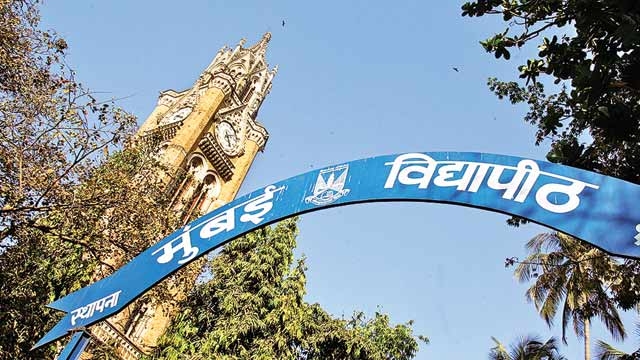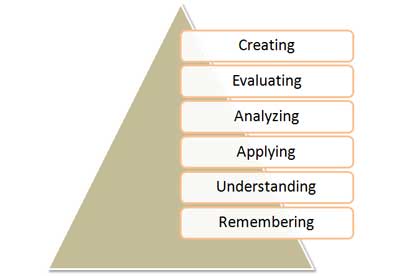Ethical leadership- issues and challenges
Summary of the issue:
One of the biggest challenge in today’s leadership is being ethical. There is dilemma among the leaders whether business first or ethics first. The study covers ethical challenges faced by business leaders with their experience and what a junior level employee feels and why they feel that their boss is not behaving in ethical way. The paper concludes with suggestion how to come out of the dilemma.
Keywords: Ethical management, ethical leadership, key ethical challenge in leadership, Nepotism, Corruption, values and ethics, equal treatment, equality, partiality.
1. Ethical leadership introduction and key challenges
Corporate world face lot of issues and ethical leadership is one of the most debated topic for centuries. Right from Mahabharat to Chanakya and in present day corporate business. With the growth in the business, people lose sight, vision for what they stand for. Organisations focus maximum on profit and increasing revenue and they forget the very basic essence of business, why they exist and what really they should do, how they should not harm the society and business. The most important part of business is ethics and role of leadership about being ethical.
“Business ethics are moral principles that guide the way a business behaves. The same principles that determine an individual”s actions also apply to business.” (“What are business ethics? - business ethics and corporate social responsibility - Anglo American,” 1995)
The business ethics are code of behavior governed by code of conduct of the organization, one’s own moral responsibility and differentiating between a good decision or a bad decision. One’s decision may be good about himself, his interest group and his organization but when we see a larger picture, when we include the society as a whole, it may not be good in that sense.
As this has been taught us during MBA Social Entrepreneurship class time to time, the days of business just thinking about profit or their shareholders have gone. Now every organization has to think about triple bottom line. It in inevitable to follow and taking care of the triple bottom line i.e. People, Planet and Profit. While conducting business, you have to take care of all of these 3 factors. You cannot ignore any one. It all about do you treat your people well, do you work on such a business model which does not exploit people, do you take care of planet such as environment friendly business practices etc.
I have worked with various organization, right from one of the India’s leading healthcare organization with thousands of people as an employee on its role to a startup recruitment firm to again a startup retail organization and multi national entertainment giant like Sony Music Entertainment India in various capacity as an HR. I have been part of various decision, ethical, unethical both. When you are an employment, your own organisation’s interest and your job safety comes first whatever big talk you give about ethics, ethical management. For instances, a B school is teaching you about ethics and ethical management, but the same B school is doing discrimination in students including hiring teacher incapable to teach the subject and non replacement even despite of strong feedback against those teachers. I think, we, as a world have learned to adapt ethics as per our convenience and need. Nobody in this world pure ethical or unethical. Its all situational and the way you want it.
What are ethical challenges in the business world?
There are various ethical issues in day to day business world. Few of them are unhealthy work environment, unsafe workplace practices, intruding in the privacy of the employees, lack of transparency, unfair working condition, unequal treatment, cheating and forgery, (Kokemuller, 2016)being biased towards employee on the basis of their qualification, their link to a specific institute or area of living, on the basis of gender, the way they speak and dress.
Ethical leadership in organizations in India
When the researcher scanned the web and all available materials, it realized that very few organization in India can boast for having ethical leadership in India. The emerging name came as Tata, Ratan Tata ((Webdeveloper, n.d.), Anand Mahindra from Mahindra and Mahindra, Azim Premji from Wipro, Kumar Managalm Birla from Aditya Birla Group. This is sad to see from many organizations, there was lacking name from MNCs and fortune 500 companies. In the words of Pushpa Shetty, A leadership is based on the vision and integrity of a person (Shetty, 2012). She has put emphasis on integrity. She further narrates that “It is ultimately about ethically motivating others in ethical directions. Management and businesses are constantly facing important ethical challenges. Ethical decision-making and leadership are the basis of ethical organizations. There is sheer dearth of ethical leadership which is evident by the recent financial crisis that triggered the worst global recession. The current unrelenting scandals by the politicians and the business community are having serious negative repercussions on business, society and the environment which needs to be addressed immediately. This article introduces the concept and reasoning behind ethical leadership and the role it plays in today’s business and society.
It is clear from various view point that ethical leadership is all about creating win-win situations for all.
Ethical issues in the organizations I have worked
Some of the key ethical issues in organisation based on my interaction and experience is:
1. Lack of transparency and consistency: Code of conduct of one of the organization is very clear about transparency in dealing and consistency of the reporting. However, CFO of the company along with head of the MIS department were changing and adjusting number and working it such a way that even a loss making unit was looking like profit making. This was giving wrong impression to board and reporting office elsewhere. This was core leadership issue. The lower rank in hierarchy was doing as they wanted to be in the good book of the boss and that was absolutely fine for them.
2. Exploitation and unequal treatment: A very senior, top management in one of the top organization had appointed an executive secretary and believed to have an illicit relationship with this top management. During recruitment, several girls reported that the executive secretary solicited sexual relationship with this top management in order to get offer letter. It happened multiple times and even one of my connection who appeared for the interview later confirmed it.
3. Nepotism: Nepotism is defined as “the practice among those with power or influence of favouring relatives or friends, especially by giving them jobs.” And it happened in at least 2 organisations. One organization had this at very high level. A highly incompetent son of MD was made sales head who could not contribute at all. Daughter was made marketing head, but she never turned to the office and organization suffered a lot. When being HR, I protested, CEO, another son came with some defence. Other regional sales head were punished for not meeting the targets, whereas this sales head was promoted with good increment. He even violated code of conduct and various HR policies.
4. Unfair treatment and misuse of power: One of the head of the department, again a top management from a very transparent organization had mood swing. The priority was not based on what the role demands, rather, it was based on what he thinks is important. There was complaint about another head of department reporting him about work, quality, issue but he never dared to question her. In other hands, he was not ready to accept even a single mistake of other department people. It was also seen that when he is in good mood, he ratified and approved even if there were bigger mistakes and he was aware about it. When he is not in a good mood, even a smallest mistake was not acceptable. He ignores mistakes done by female staff, specially young girls, whereas same was not applicable in terms of male staff. Even he terminated few employees who were not directly reporting to him, because he believes that they are not performing well. In one case, head of the department is outdated, does not know latest technology, how actually things happen. She wrongly committed to management and team member being aware whether possible or not possible, told technically why it is not possible. He became scapegoat and wrongfully terminated. This senior management person is well aware about non competency of head of the department.
What are the reasons for these unethical behavior
Following are the reasons:
1. In the first case, CFO has dual boss reporting such as regional CFO and MD. He also got a kind of security in the organization by working for more than a decade; he is soon going to get retire so not in a mood of change the job. Organisation is small, so he won’t get a new job with similar power and authority in a bigger organization. That’s why he has to show his region is in profit and doing well. It is also a halo effect- to make his bosses happy.
2. In the second cases, reason is personal behavior, lust and being greedy.
3. In third case, family relationship is key. The Managing Director knows non competence of children to work in outside world is reason for nepotism.
4. In fourth cases, it is again mood swing, going in the flow of other’s feedback, surrounded by people incompetent and fear of owns job security are reasons.
What is the outcome of those ethical behavioural issues mentioned above
1. No growth: none of these organizations have really grown well despite of having lot of potential. They are either loss making or still have same turnover even year after year. They are losing in the market and may not survive once exposed.
2. Attrition: Attrition is high in these organization and people are not happy. This is diluting whole environment. Few of these organizations specially mentioned in 1stethical problem may face law suit and the cost will be high.
3. Productivity: These behaviours are affecting productivity.
What solution do I propose?
1. The management needs to be sent for specific training including impact of such behavior.
2. Ethical management lesson: They should be sent to top institutes like IIM, Chanakya Institute of Leadership, Mumbai University on ethical management lesson.
3. Counseling: They need serious counseling.
All these are not possible without their own willingness and without exposing dark side of their behavior.
Conclusion:
Ethical management is really a tough subject, not explored beyond theory even in the management curriculum. With example, I have cited how so called business school even lack in basic principle of ethical management and the corporate leaders are output of these business schools only. It is a change management thing and if you ask to propose how will I manage the change in 1500 words, you are asking to give 1 pill treatment of tuberculosis within a week. It needs lot of intervention, lot of planning and take years to bring changes. Corporate lacks ethical leadership. I have included few feedback as annexure at the end of this paper. These examples may help us to explore further.
Bibliography
1. What are business ethics? - business ethics and corporate social responsibility - Anglo American. (1995). Retrieved October 29, 2016, from http://businesscasestudies.co.uk/anglo-american/business-ethics-and-corporate-social-responsibility/what-are-business-ethics.html 2. Kokemuller, N. (2016). Common types of ethical issues within organizations. Small Business Chron. Retrieved from http://smallbusiness.chron.com/common-types-ethical-issues-within-organizations-15238.html 3. Webdeveloper. Ethical leadership: Ratan Tata and India’s Tata group. Retrieved October 29, 2016, from http://www.icmrindia.org/casestudies/catalogue/Business%20Ethics/BECG130.htm 4. Shetty, P. (2012, January 01). Ethical Leadership: Need for Business Ethics Education. Retrieved October 29, 2016, from managementjournal.info, http://www.managementjournal.info/download1.php?f=shetty%20pushpa.pdf
Annexure: Feedback from people about ethical leadership
Respected group members (non edited, posted as it is)-
In terms of the matter posted by respected Govind Sharma jyu.
Characteristics of principle-centered/ethical leaders
1-They are continually learning-They are constantly educated by their experiences. They read, they seek training, they take classes, they listen to others, they learn through both their ears and their eyes. They discover that the more they know, the more they realize they do not know.
2-They radiate positive energy-They are cheerful, pleasant, happy, and their attitude is optimistic, positive, upbeat, their spirit is enthusiastic, hopeful and believing.
3-They believe in other people- They do not overreact to negative behaviors, criticism, or human weaknesses. They realize that behavior and potential are two different things. They believe in the unseen potential of all people. They do not carry grudges. They see the oak tree in the acorn and understand the process of helping the acorn become a great oak.
4-They live balanced lives-They read the best literature and magazines, and keep up with current affairs and events. They are active intellectually, having many interests. They read, watch, observe and learn. They are open in their communication- simple, direct and non-manipulative. Their actions and attitudes are proportionate to the situation-balanced, temperate, moderate and wise. They are not slavishly chained to their plans and schedules. They do not condemn themselves for every foolish mistake or social blunder. They do not brood about yesterday or daydream about tomorrow. They live sensibly in the present, carefully plan the future, and flexibly adapt to changing circumstances. They see success on the far side of failure. The only failure for them is the experience not learned from.
5-They see life as an adventure-Their security comes from within instead of from without. Their security lies in their initiatives, resourcefulness, creativity, willpower, courage, stamina, and native intelligence. They rediscover people each time they meet them. One of their fixed principles is flexibility.
6-They are synergistic-Synergy is the state in which the whole is more than the sum of the parts. They are change catalysts. In team endeavors they build on their strengths and strive to complement their weaknesses with the strengths of others.
7-They exercise for self-renewal-They exercise their minds through reading, creative problem-solving, writing and visualizing. Emotionally they make an effort to be patient, and to listen to others with genuine empathy.
Habits of the Principle-centered leadership
1-Be proactive-the principle of self-awareness, personal vision, and responsibility.
2- Begin with the end in mind- the principle of leadership and mission.
3- Put first things first-the principle of managing time and priorities around roles and goals.
4- Seek first to understand before being understood-the principle of empathetic communication.
5- Synergize-the principle of creative cooperation-
6-Sharpen the saw- the principle of continuous improvement.
(Source-Principle-Centered Leadership-Stephen R Covey)
(Ranbir Kaushal)
Mr. Ranbir Kaushal is a very senior person with extensive experience in banking and HR with impeccable knowledge.
Below is his introduction
My educational qualification is B A (Eco.), LL.B, JAIIB from Mumbai University. I have done my entire school education from Mumbai only. I was in the service of a national level bank and am retired now. I was retired from the post of Assistant General Manager in 2011. During my service, I was posted as the head of district for a period of five years. During most of the period of my service, I had been remained posted in the H R and Vigilance Departments. During the period of that five years, one of my assignments was imparting training on various subjects. I am running 66 years of age.
From Ms. Kumud Dutt
Ethical leader should be able to identify potentials in his team members. He should believe in equality and should be neutral. Should have good problem solving skills. He should trust others and also be trusted by others. He should be supportive, cooperative and attentive to team members. He should considered himself as one of the member of team and should show attitude as superior or senior. I hv not yet met any ethical leader
She is an architect by profession and helped several institute for setting up. She even did not bother about money and position and resigned from her well paid job at once as soon as she realized they are involved in unethical practices.



























